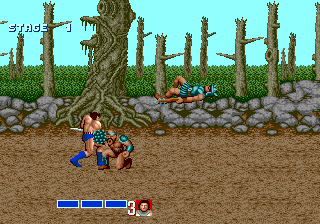Introduction to MiSTer FPGA - A retro video game console
Retro is here to stay, and this small device is the big thing in game preservation. And it does more than just play your favourite games from the past.
Retro gaming is now hotter than ever. People who were kids in the 80’s - 90’s have now grown up, and want to live their childhood again. At least for me, this is one of the biggest drivers for being interested in retro games. I grew up playing games on Commodore 64, Amiga 500 and 386/486 PCs. I didn’t own any consoles like Nintendo or PlayStation, but I played them at friends’ houses.
There have been quite a lot of different ways of playing retro games. You can install emulation software for a specific device, or you could for example buy one of those official mini consoles like NES or SNES. There have been other devices on the market as well, such as the Analogue NT, which is designed to play actual Nintendo cartridges.
I was intrigued by these kind of devices, but they never really triggered that “I have to own that” feeling. Then I saw Jeff Gerstmann play MiSTer FPGA on a Giant Bomb video. I’m not sure if I was sold immediately, but seeing MiSTer on multiple Giant Bomb videos had me thinking that maybe this is the thing I’ve always wanted, but didn’t know it until now.
MiSTer FPGA is a single device with a footprint of about two credit cards, and it emulates / replicates multiple old video game consoles, old computers, and arcade games.




Supported game consoles:
Sega 32X
AY-3-8500 "Pong-on-a-chip"
Entex Adventure Vision
Emerson Arcadia 2001
Bally Astrocade
Atari 5200 SuperSystem
Atari 7800 ProSystem / Atari 2600
Atari Lynx
BBC Bridge Companion
Casio PV-1000
Fairchild Channel F
ColecoVision / Sega SG-1000
VTech CreatiVision / Dick Smith Wizzard
Bit Corp Gamate
Nintendo Game Boy Advance
2x Game Boy Advance (2-Player)
Bit Corporation Gamate
Nintendo Game Boy
2x Game Boy (2-Player)
Nintendo Game & Watch Handheld Devices
Sega Genesis / Sega Mega Drive
Mattel Intellivision
Nichibutsu My Vision
Sega CD / Sega Mega-CD
Nintendo Entertainment System / Famicom Disk System / NSF Music Player
SNK Neo Geo AES & MVS
Magnavox Odyssey 2 / Philips Odyssey 2 / Philips Videopac G7000
Pokémon Mini
Sony Playstation
Nintendo Super Game Boy and Super Game Boy 2
Sega Master System / Sega Game Gear / Sega SG-1000
Super Nintendo Entertainment System / Nintendo Satellaview / SPC Music Player
Bandai Super Vision 8000
Watara SuperVision
NEC TurboGrafx-16 / PC Engine / CD-ROM² / Super CD-ROM² / Duo / TurboDuo / SuperGrafx / Arcade Card
Interton VC4000 / Acetronic MPU-1000 / Occitane OC2000
Vectrex
Bandai WonderSwan / WonderSwan Color / SwanCrystal
Supported computers:
Acorn Atom
Acorn Electron
Matra & Hachette Ordinateur Alice (TRS-80 MC-10 Clone)
MITS Altair 8800
Amstrad PCW
Amstrad CPC 6128
486DX33 (No FPU) compatible
Apogee BK-01 / Radio-86RK
Apple IIe
Apple I
Mattel Aquarius
Acorn Archimedes
Atari 800 / 800XL / 65XE / 130XE
Atari ST / STe
BBC Micro B / Master 128K
Elektronika BK (BK-0011M CPU)
Commodore C16 / Plus/4
Commodore 64 / Games System / 128
Commodore 128
Casio PV-2000
CHIP-8 by Joseph Weisbecker
Tandy Color Computer 2 / Dragon 32
Tandy Color Computer 3
Coleco Adam
EDSAC
EACA EG2000 Colour Genie
Galaksija by Voja Antonić
Compukit Homelab
Interact Home Computer
Jupiter Ace
Vtech Laser 310
Camputers Lynx 48k, 96k
Macintosh Plus
Commodore Amiga 500 / 600 / 1200 / 4000 / CD32
Microsoft MSX1
Microsoft MSX / MSX2 / Plus / MSX3 / TurboR
Grant Searle's MultiComp
Tesla Ondra SPO-186
PEL Varaždin Orao / Eagle
Tangerine Oric / Oric-1
IBM PC/XT
NEC PC8801 MKII SR
DEC PDP-1
Commodore PET 2001
Tesla PMD 85
Sinclair QL
Bandai RX-78
Miles Gordon Technology SAM Coupé
Sharp MZ
Sord M5
Specialist / Специалист
Spectravideo SV-328
Tatung Einstein TC01 & 256
Texas Instruments TI-99/4A
Tomy Tutor, Pyuta, and Pyuta Jr.
Radio Shack / Tandy TRS-80 Micro Computer System / Model I
TSConf (ZX-Evolution Improvement)
Compukit UK101
Vector-06C / Вектор-06Ц
Commodore VIC-20
Sharp X68000
Sinclair ZX Spectrum
Sinclair ZX80 / ZX81
ZX Spectrum Next
Personally I’m more interested in Nintendo’s and Sega’s consoles, because they were the things I had limited access to, but didn’t own them back in the day. From the computer side, PC 486DX core has been my go to choice, because that one I did have in the 90’s. I can play all the same games as I did then, and I can even install Windows 95, just like it was done on a real hardware. So nostalgic!
With MiSTer, I’ve also been able to experience consoles that I didn’t even know existed when they were current, like TurboGrafx16 and Neo Geo.
Below is a gallery of screenshots captured on the MiSTer.














MiSTer FPGA’s GitHub page can be found here: https://github.com/MiSTer-devel/Main_MiSTer/wiki
Next time we will dive a bit deeper in to what MiSTer FPGA really is and how it works.
What’s your favourite game or game console from the past?




